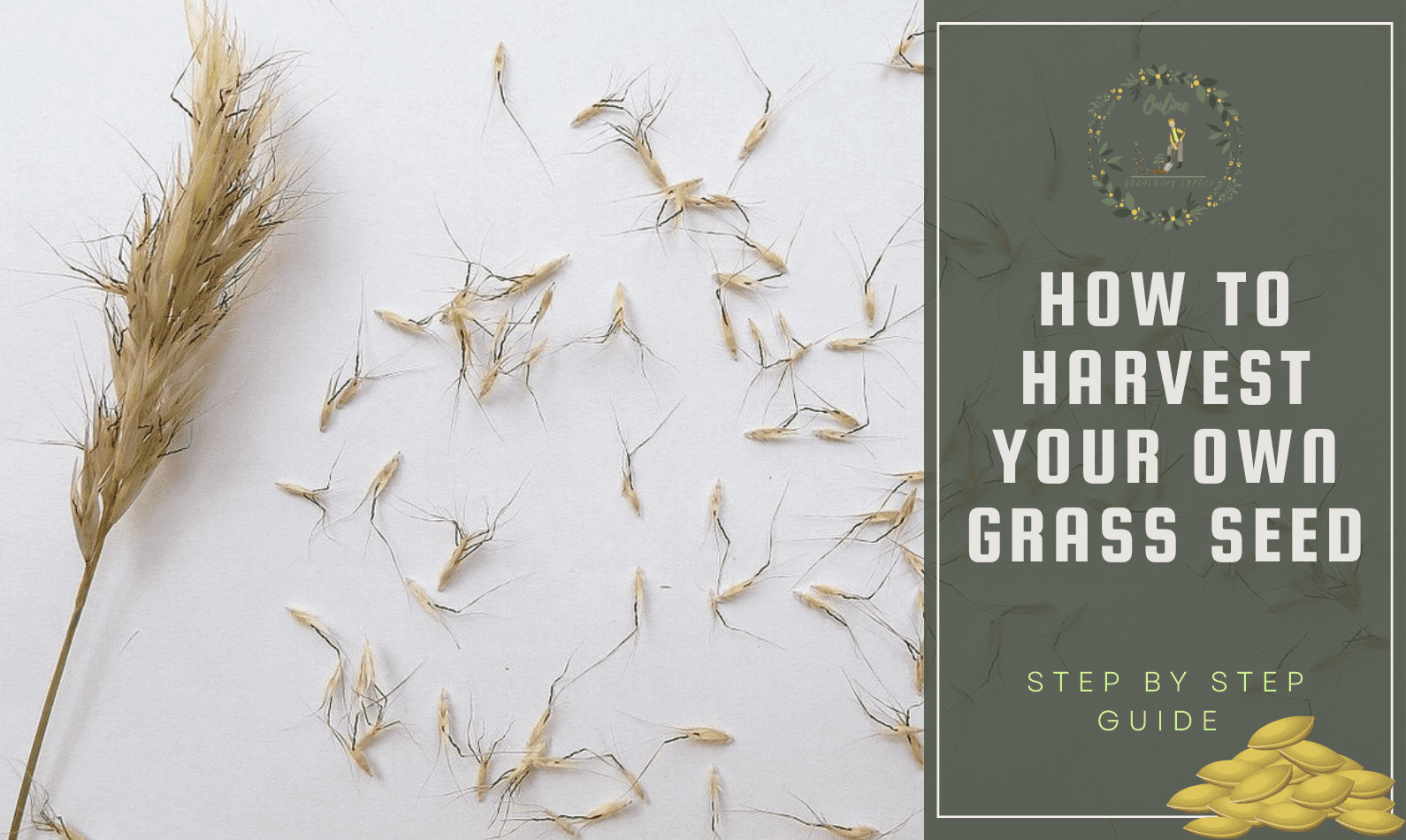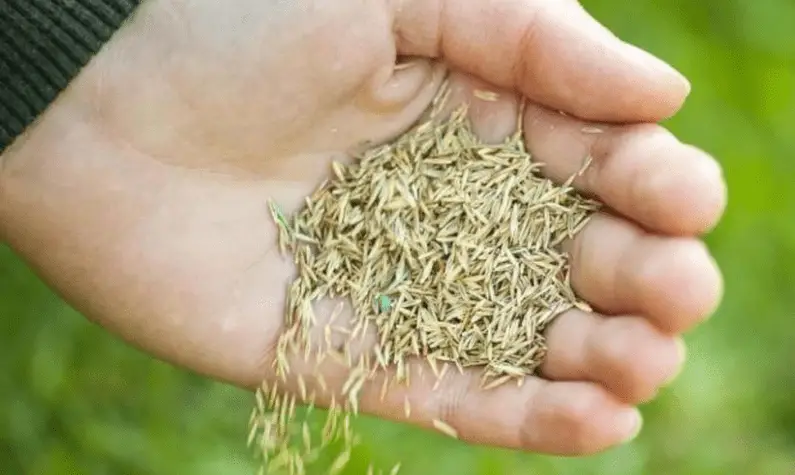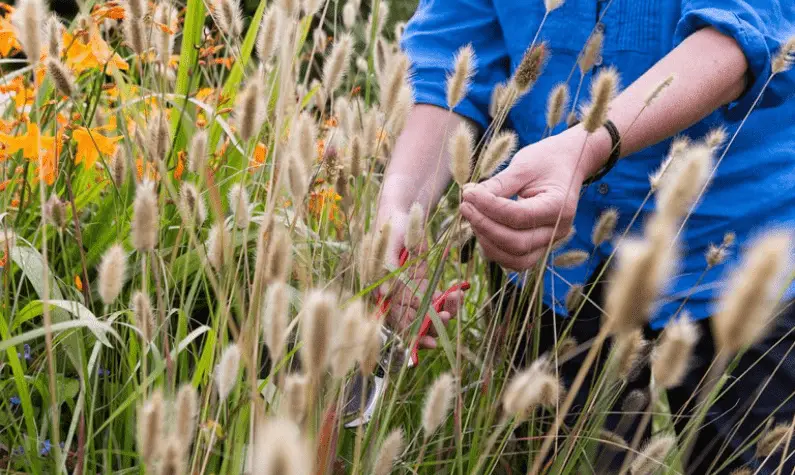How to Harvest Your Own Grass Seed: Using pricey, pre-packaged seed does not have to be the beginning and finish of your lawn’s life cycle. Harvesting your own grass seed is a simple and natural way to save money while also transforming your lawn into a sustainable haven for your family and friends. You’ll feel like a true backyard farmer, and you won’t have to run to the shop every time your lawn needs some additional seed.
If you do it at the proper time of year, you may save grass seed and use it to oversee your lawn every growing season. So put on your straw hat and continue reading to find out how to collect your own grass seeds.
Contents
- How to Harvest Your Own Grass Seed? 4 Steps of Harvesting Grass Seed
- Step 1: Choosing the harvesting location
- Step 2: Stop Mowing
- Step 3: Collecting Seeds
- To collect seeds with your hands, do the following:
- Harvesting seeds with scissors or grass shears:
- Harvesting seeds with a portable brush harvester is as follows:
- Step 4: Storing The Seeds
- When Should I Harvest My Grass
- Conclusion
- Why should I harvest grass seeds instead of just buying them?
- How long may grass seeds be stored?
- Will the weather impact the mature seeds?
How to Harvest Your Own Grass Seed? 4 Steps of Harvesting Grass Seed
Things Required:
- Grass on the lawn that already exists
- Your very own two hands
- Gloves
- A cloth or plastic bag for collecting seeds is recommended.
- Seeds to be filtered by a sieve.
- Seed heads should be clipped with scissors or lawn shears (optional)
- Harvesting seeds with a handheld brush harvester (optional)
- Container that is both strong and airtight for long-term storage
Step 1: Choosing the harvesting location
The greatest site to harvest seed is on a section of your lawn that receives partial to full sun and has grass growth. Sneaky weeds shouldn’t be allowed to take over your perfect spot: you don’t want to spread a wonderful layer of weed seed all over your grass.
What factors do you consider while determining the size of your harvest area? It all relies on how big your lawn is and how much of it needs to be overseeded to determine how much to do. You’ll need approximately 2 to 4 pounds of seed per 1,000 square feet of lawn area to complete the job for a complete overseeding.
Step 2: Stop Mowing
Stop mowing the area where you’ll be collecting seeds so that your seed heads have enough time to grow fully. Continue to water your grass and wait around 20 to 30 days after it has flowered before harvesting it for the first time. The majority of the time, you’ll want to cease mowing between the middle of summer and the end of summer.
How to detect if your seeds are ready to be harvested is as follows:
Cut a few seed heads from different lawn parts to see how well your grass grows. Check the color of the seeds by looking at them: If they’re still green, that means they’re not ready. If they’re tan, orange, or golden in color, go one step further and call them: Squeeze the seeds to release their oils.
If a seed feels soft and squishy (as if it were a tiny piece of dough), it needs a little more time to germinate and grow. if you have to use medium to strong pressure with your thumbnail to dent the seed, it means the seed is firm and ready to be harvested.
Is there another simple test? With your palm, give the seed head a good whack. It is time to harvest the seeds if the seed top shatters (the seeds pop out of the seed head) and the seeds are ready. Before you begin harvesting, you’ll want at least 75% of the seeds to be fully developed.
Pro tip: Seed heads ripen from the top down; therefore, while inspecting the color of the flower head, look at the entire flower head rather than just the seeds at the very top.
Step 3: Collecting Seeds
There are three methods for harvesting seeds in your backyard garden. Seeds can be collected using the following tools:
- Your gloved hands are a nice touch.
- Grass shears or scissors are useful tools.
- A portable brush harvester.
The size of your area will determine the ideal solution for you, the amount of time you have available, and how much you are ready to sweat.
To collect seeds with your hands, do the following:
Here’s the quickest and most labor-intensive approach for making yourself feel like you’re in the world of Little House on The Prairie.
- Put on gloves to keep your fingers safe from minor grass burns and cuts.
- The inflorescence (the flowering component of your grass that extends from the stem) should be held with one hand at the base of this.
- Slide your thumb and index finger upward to the top of the plant, gently squeezing the plant as you go, using your other hand using the same technique.
- Seeds will collect at the tips of your fingers as you work. Gather the seeds and place them in a seed bag that you have prepared.
- Transfer to the next plant and repeat the process there as well.
- To mow your lawn after gathering seeds, use a high lawn mower setting and follow the one-third rule, which is as follows: Only one-third of your grass’s total height should be clipped during each mowing session to avoid lawn damage.
Harvesting seeds with scissors or grass shears:
Rather than squeezing each plant manually to release seeds, you can cut your grass and place it directly into your seed bag, saving time. Although there is still much crouching or kneeling required, there is less fingerwork involved.
- Cut grass stems slightly below the bottom of the seed heads to prevent them from sprouting.
- Cut grass and place it in your grass bag. A few loose seeds will fall to the bottom of the bag, while the majority of the seeds will remain in the seed heads until they dry and then fall to the bottom of the bag.
- Allow the seeds to dry. Keep your seed bag in a cool, dry spot away from pests to prolong its shelf life.
- It’s time to shake things up! Make sure to shake the bag every now and then to keep the grass spikes from clinging to one another.
- After six to eight weeks, give the seed bag a good shake to ensure that all seeds are well distributed. Next, use a sieve to remove the seeds from the rest of the plant matter before pouring them into a brand-new container.
- Keep it in the refrigerator until the following growing season.
Pro tip: Compost the dried extra plant material to help you adhere to the “reduce, reuse, recycle” philosophy.
Harvesting seeds with a portable brush harvester is as follows:
Although a handheld brush harvester is a significant expenditure, it will perform nearly all your jobs. If you intend to harvest your grass on a yearly basis, or if manual harvesting is to taxing on your back, a handheld brush harvester is the best option for your needs.
- While walking over your lawn with your brush harvester in tow, cut your grass to just below the level of the seed heads.
- With some harvesters, it may be beneficial to rotate your body from one side to another to maximize the number of seed heads you collect. This will depend on which harvester you purchase.
- Pour the contents of your harvester through a sieve to remove any organic matter, such as leaves and twigs, before using it.
- If necessary, refilter the contents to reduce the amount of extra plant material. After that, place your seeds in a cool, dry place.
Step 4: Storing The Seeds
Once you’ve separated your seeds from the rest of the organic waste, store them in an airtight container in a cool, dry location to avoid the growth of fungus and pest infestations. Remember to put your grass seed in a squirrel-proof container if you want to avoid having your seeds eaten by rodents. Keep seed sacks in a galvanized metal garbage can or tightly sealed glass jars to keep them from getting wet or rotting.
The storage space should not be subjected to extreme temperature or humidity fluctuations: Mold thrives in damp environments, and moldy seeds will not germinate.
In the event that you have both a thermometer and a hygrometer (which measures relative humidity), you can follow this simple rule: The total of the relative humidity and temperature should never be greater than 100. As a result, if the relative humidity is 50% in your area, the temperature should always be 50 degrees Fahrenheit or below.
If the appropriate circumstances are met, your seeds will be ready to germinate when you sow them the following season.
When Should I Harvest My Grass
Harvest your seed 20 to 30 days after your grass has bloomed but before it begins to produce seeds to ensure a successful harvest. Seeds must be harvested only when they have reached their complete maturity. If you harvest seeds while they are still green and damp, they will not germinate. The same is true if you harvest too late, as seeds will have already fallen to the ground by that time.
Conclusion
Harvesting your own grass seed is a simple method to repurpose what you already have while saving money and feeling great about your environmental impact. If you want to be a true home grower, you may change your lawn into a more sustainable, low-waste environment.
Frequently Asked Questions (FAQ)
Why should I harvest grass seeds instead of just buying them?
When your grass is looking thin and could benefit from a thorough overseeding, or when your lawn is growing barren parts and requires reseeding, you’ll have to shell out a significant sum of money for a new seed. Seed mixes for an average-sized, 10,000-square-foot lawn can cost anywhere from $60 to $140, depending on the kind.
With the expense of labor included, many homeowners spend hundreds of dollars to have their grass prepared and overseeded in the spring. Aerate and oversee your lawn yourself, using seed from your own garden, and the savings accumulate quickly.
How long may grass seeds be stored?
The fresher your seeds are, the more probable it is that they will germinate and create a robust root system. It’s preferable to use seeds from the previous season for this season, even if you may keep them for up to a year. This will assure good germination rates and limit the likelihood of bare places in your garden.
Will the weather impact the mature seeds?
Yes! While the type of grass and environment in which you live to significantly impact seed maturity rates, it is also crucial to consider whether extremes and unexpected temperature swings.
Seed maturation is accelerated in hot, dry weather, whereas seeds grown in cool, damp circumstances take longer to reach maturity. Especially if your location has experienced a particularly dry summer, keep an eye on your grass seeds earlier in the season to see if they have matured.




